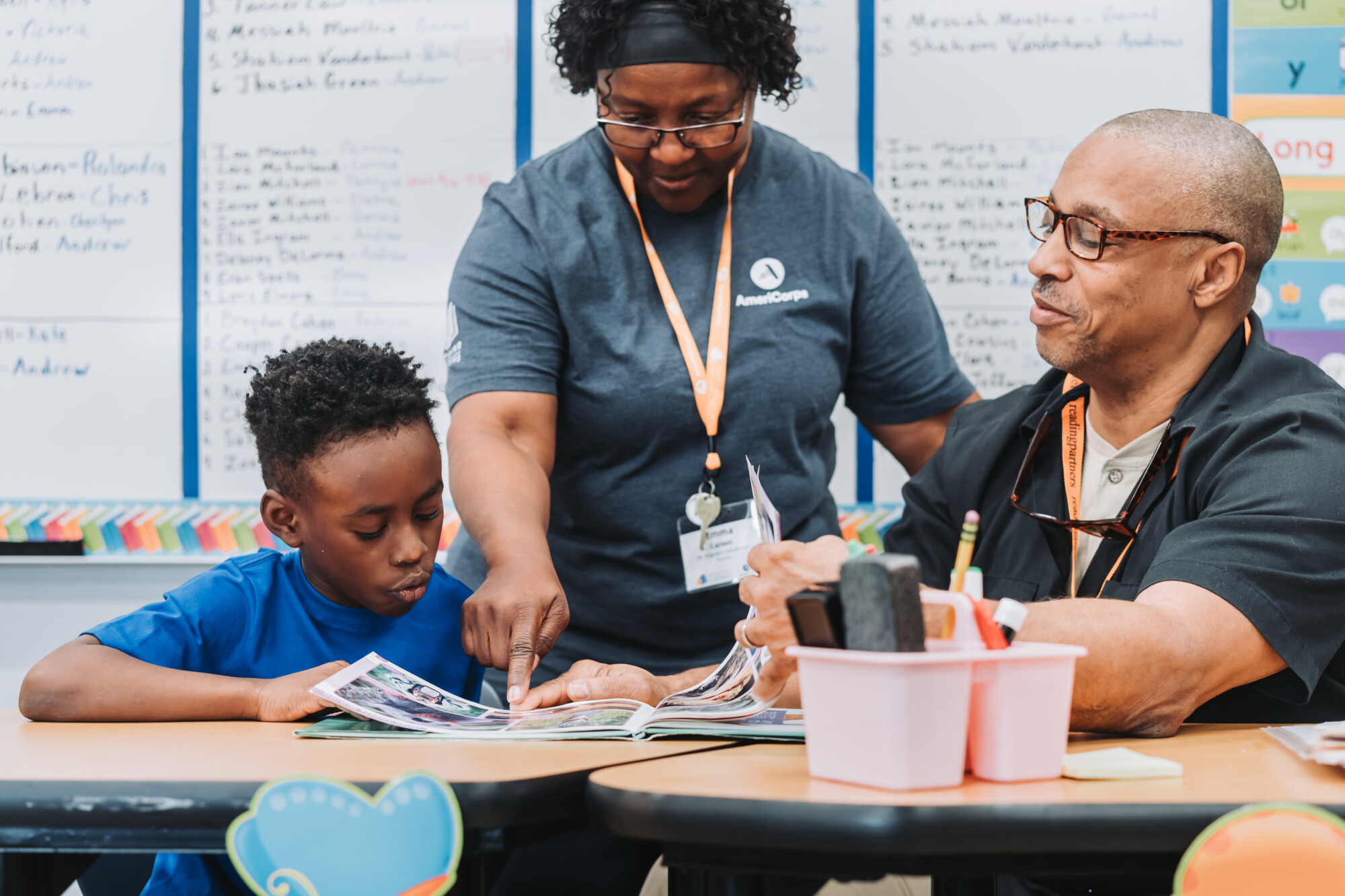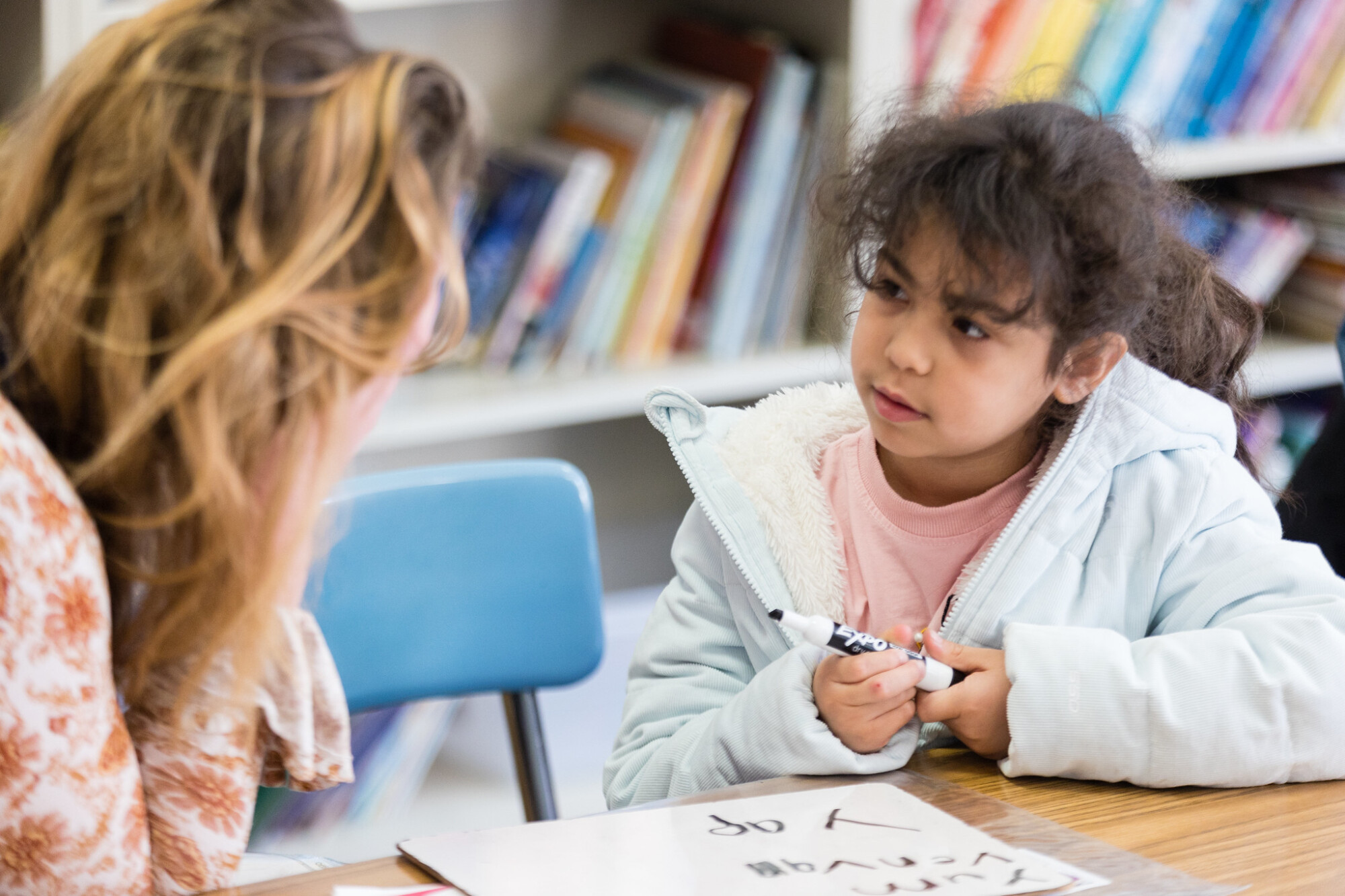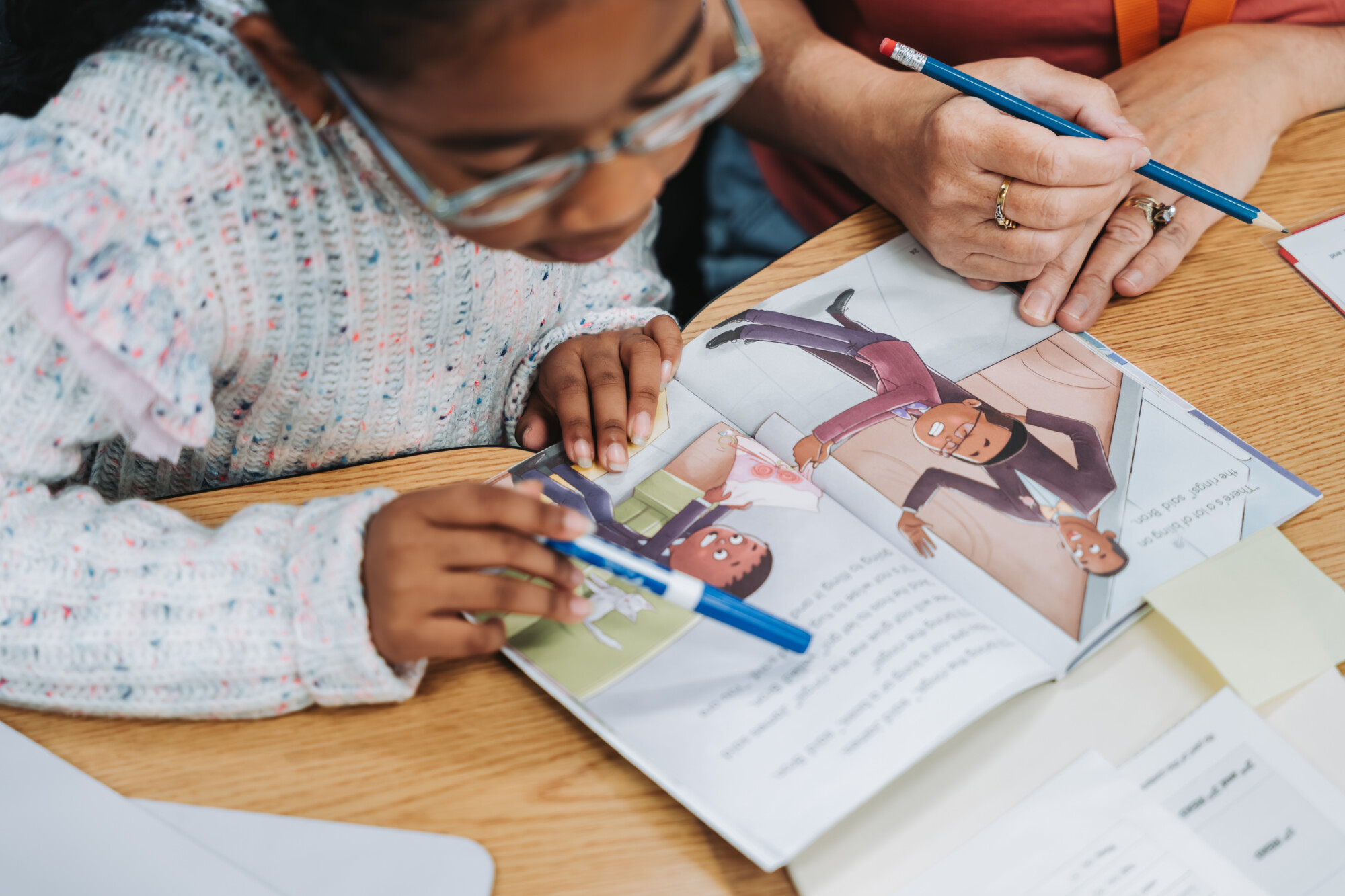
Learning to read with dyslexia
January 27, 2025
Program coordinator, Reading Partners South Carolina
As parents, caregivers, educators, and tutors, we have the opportunity to encourage the mindset of creative learning and thinking outside the box for the young ones in our lives. This mindset is great for all students, but it can really make a difference to learners with dyslexia. While learners with a neurotypical brain process language more sequentially, students with dyslexia absorb language and symbols in a unique way, and may need a different kind of literacy instruction.
What is dyslexia?
Dyslexia is a learning deficit that involves difficulty in processing language when reading, spelling, and writing. Students with dyslexia can thrive in learning to read by using creative, out-of-the-box methods, such as seeing the big picture and the use of visuals. The brains of learners with dyslexia tend to not align well with the traditional forms of phonics instruction. According to the blog Neurodiversity and Learning to Read, “Dyslexia is not a barrier, but a unique lens through which individuals navigate the world!”

Characteristics of learners with dyslexia
Kindergarten through 5th-grade students with dyslexia can find it hard to remember letter names and sounds. Recognizing sight words can be challenging as well. While reading aloud, students may substitute words with other words, or confuse letters with similar appearances or sounds. For example, they may confuse “b” and “d.”
Additional signs of dyslexia in the K-5 grade age group include difficulties in:
- “Blending letter sounds
- Sounding out unfamiliar words
- Recognizing words that rhyme
- Skipping smaller words such as “of” and “by” when reading aloud
- Spelling the same word consistently
- Remembering important details from readings”
Many students with dyslexia feel frustrated and overwhelmed while reading, but luckily, there are tools and techniques that educators and caregivers can use to support them along their reading journey.

Tools to help learners with dyslexia
In order for students with dyslexia to thrive in reading and writing, multisensory and holistic approaches work well. Remember to embrace creativity, use visual aids, and engage in activities that focus on learners’ strengths. Two ways to support students with dyslexia in learning to read is through the use of assistive technology and line readers.
Assistive technology helps students with dyslexia process words on the page in a way that makes sense to them. A few examples of assistive technology are flexible furniture, audio recorders, text-to-speech software, and line readers.
Line readers are examples of assistive technology. They are devices that highlight a single line of text at a time and obscure the surrounding lines, helping students narrow their focus down to just a few words. By removing distractions, it can allow students to slow down and feel less overwhelmed by large blocks of text.

Techniques to help students with dyslexia
When teaching students with dyslexia to read, choral reading and shared reading is very beneficial. Other approaches that are effective include multisensory approaches like letter art, sand writing, arm tapping, and other tactile activities that engage the sense of touch.
The use of visual aids, cues, and movements help to support comprehension. Also, it is important to focus on consistent patterns and structured sequences, sound blending, and text-to-speech technology to offer support to students. An individualized approach that is tailored to the unique strengths and challenges of the student and positive reinforcement that fosters confidence is best.
Lastly, remember to celebrate students’ progress with them. This encourages students in a way that encourages them to try new things and never want to give up.



